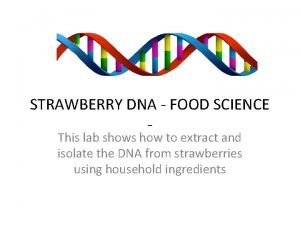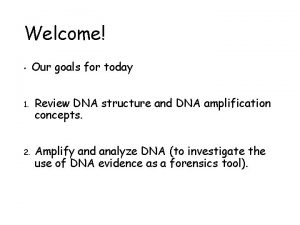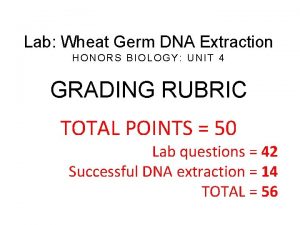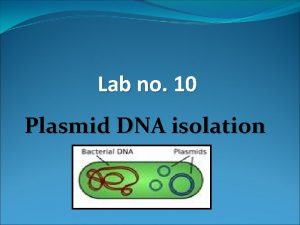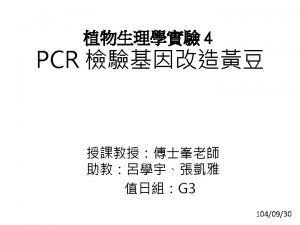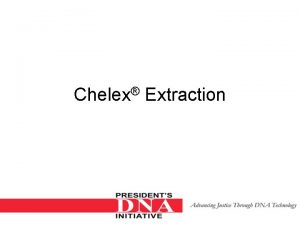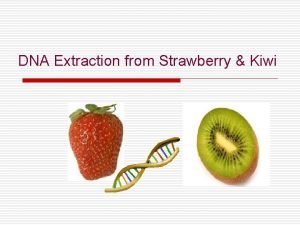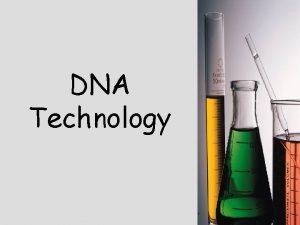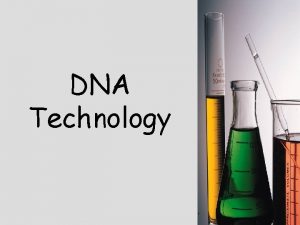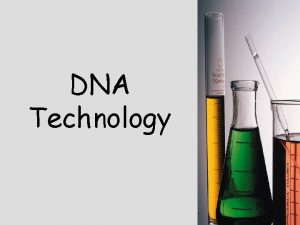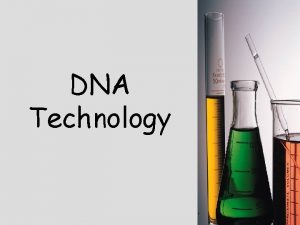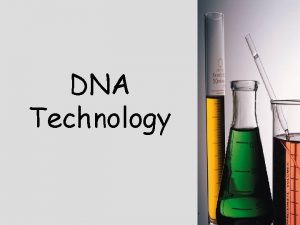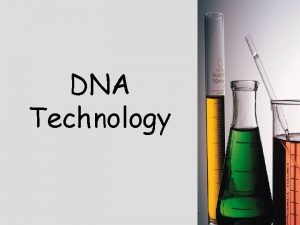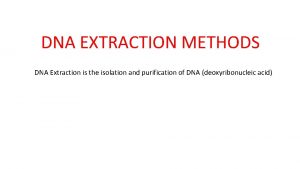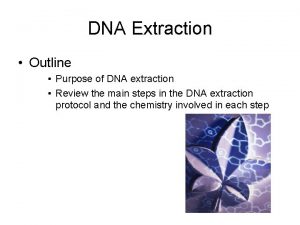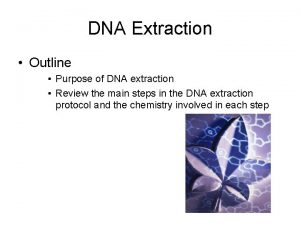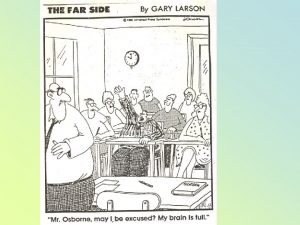DNA TECHNOLOGY DNA Extraction Chemical treatments cause cells
























- Slides: 24

DNA TECHNOLOGY

DNA Extraction ¡ Chemical treatments cause cells and nuclei to burst ¡ The DNA is inherently sticky, sticky and can be pulled out of the mixture ¡ This is called “spooling” DNA

“Spooled” DNA

Cutting DNA ¡ Restriction enzymes cut DNA at specific sequences ¡ Useful to divide DNA into manageable fragments

Electrophoresis ¡ DNA can be separated based on size and charge ¡ The phosphate groups are negatively charged ¡ DNA is placed in a gel and electricity is run through

Electrophoresis Negative DNA moves toward the positive end ¡ Smaller fragments move farther and faster ¡

Electrophoresis

Cloning Clone a member of a group of genetically identical cells ¡ May be produced by asexual reproduction (mitosis) ¡

Cloning organisms ¡A body cell from one organism and an egg cell from another are fused ¡ The resulting cell divides like a normal embryo

Cloning “Dolly”

Steps in DNA Sequencing Many copies of a single strand of DNA are placed in a test tube ¡ DNA polymerase is added ¡ A mixture of nucleotides is added some of which have dye molecules attached ¡ Each base (A, T, C, G) has a different color dye ¡

DNA Sequencing ¡ The result is DNA fragments of multiple sizes with colors that can be identified

DNA Sequencing ¡ After the gel separates the resulting fragments by size, we 'read' the sequence from bottom to top.

Copying DNA ¡ Polymerase Chain Reaction Also called PCR ¡ A method of making many copies of a piece of DNA ¡

Steps in Copying DNA • • A DNA molecule is placed in a small test tube DNA polymerase that can work at high temps is added

Steps in Copying DNA ¡ The DNA is heated to separate the two strands ¡ Primers, Primers short pieces of DNA complementary to the ends of the molecule to be copied, are added

Copying DNA • The tube is cooled, and DNA polymerase adds new bases to the separated strands

PCR Large amounts of DNA can be made from a small starting sample

Why sequence the human genome? • Diagnose genetic disorders • Gene therapy – Inserting normal genes into human cells to correct disorders

Transgenic Plants Virus Protection (peppers) ¡ Insect Protection (potatoes) ¡ Tomatoes (delayed ripening) ¡ Herbicide Protection (beets) ¡

Biotech in the Environment Spiderwort, yeast – detect radiation ¡ Bacteria – Clean up oil spills ¡

Stem cells * Can develop into many different cell types in the body.

Other Ethical Issues Are health risks associated with transgenics? • What are the long-term effects on the environment when transgenics are released in the field? • Who will have access to these technologies? ¡

Ethical issues cont. Will these interventions redefine what it means to be “normal”? ¡ What ethical, social, and legal controls or reviews should be placed on such research? ¡
 Strawberry dna extraction materials
Strawberry dna extraction materials Dna extraction
Dna extraction Dna extraction from wheat germ lab answers
Dna extraction from wheat germ lab answers Dna extraction
Dna extraction Fraction
Fraction G
G Wheat germ dna factory
Wheat germ dna factory Chelex dna extraction advantages and disadvantages
Chelex dna extraction advantages and disadvantages Purpose of extraction
Purpose of extraction Dna extraction from kiwi fruit
Dna extraction from kiwi fruit Submentovertical projection
Submentovertical projection Papillary duct of bellini
Papillary duct of bellini Parafollicular
Parafollicular Haploid and diploid venn diagram
Haploid and diploid venn diagram Somatic cells vs germ cells
Somatic cells vs germ cells Red blood cells and white blood cells difference
Red blood cells and white blood cells difference Eukarya
Eukarya Plant vs animal cell venn diagram
Plant vs animal cell venn diagram Prokaryotes vs eukaryotes venn diagram
Prokaryotes vs eukaryotes venn diagram Cell organelle jeopardy
Cell organelle jeopardy Masses of cells form and steal nutrients from healthy cells
Masses of cells form and steal nutrients from healthy cells Label
Label Are plant cells prokaryotic or eukaryotic
Are plant cells prokaryotic or eukaryotic Are red blood cells prokaryotic or eukaryotic
Are red blood cells prokaryotic or eukaryotic Nondisjunction in meiosis
Nondisjunction in meiosis
